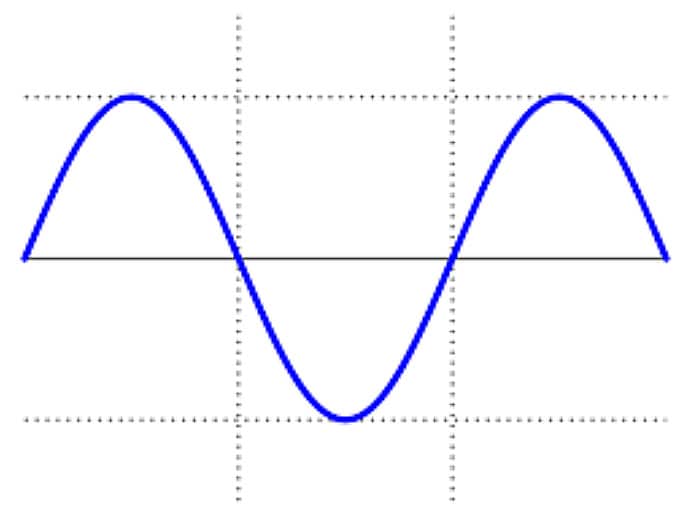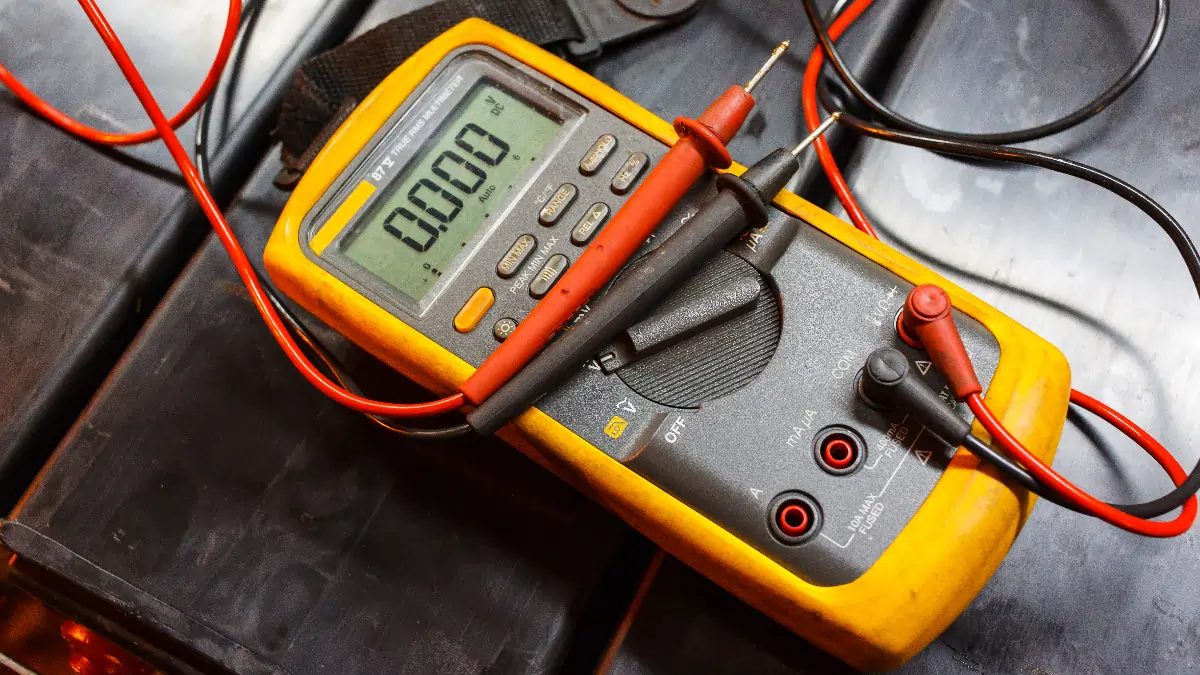Unleash Your RV’s Potential: Installing an Inverter for Ultimate Freedom
If you’re looking to install an inverter in your RV, it’s wise to get a solid grasp of what an inverter is, how it functions, and what you’ll need for the installation. They say knowledge is power, and in this case, it’s literally true. When you flip a switch in your RV, you likely don’t give a second thought to the complex system making that simple action possible.
When you’re parked at a campground and plugged into shore power, life is simple. But if you’re yearning for a more daring escapade—like boondocking on a mountain’s edge or beside a sprawling lake, with nothing but the stars and darkness for company—an inverter becomes essential.
Think of it as cutting the cord. Installing an inverter eliminates the last barriers to camping virtually anywhere. It enables you to power your RV with a portable DC source, freeing you from the shackles of shore power or a generator, which needs a constant fuel source, be it solar or gas.
Understanding the Role of an Inverter in an RV
The role of an inverter is straightforward in theory but complex in execution. Unfortunately, not every RV comes pre-equipped with one. While many newer models do include an inverter, it’s not a guarantee. The upside? Inverters are becoming increasingly standard in newly manufactured RVs.
What Does an Inverter Do?
In the U.S., 120V AC power is standard for residential and commercial buildings. Similarly, most RVs are wired to accommodate standard power outlets and appliances that run on 120V AC. However, when you’re relying solely on your RV’s batteries, you’re working with a 12V DC limitation.
Here’s where the inverter comes into play. It converts the 12V DC from your batteries to 120V AC, meeting your RV’s power needs. Without an inverter, you’d be stuck firing up a generator for any appliance requiring 120V AC. The inverter also alternates the current, creating a sine wave that’s safe for your RV’s wiring and outlets.
Why is an Inverter Essential for an RV?
The term “essential” may be a bit strong—smaller RVs can get by with just a generator. However, an inverter does offer significant advantages. For starters, it expands your options for where you can travel and what you can power. It also paves the way for integrating solar power, further enhancing your RV’s mobility and reducing noise pollution.
Imagine soaking in the beauty of the Northern Lights without the disruptive roar of a generator. Sure, battery generators are an option, but they require recharging just like your RV’s batteries.
An inverter is more compact than a generator, easy to install, and provides unmatched flexibility in power consumption and sourcing.
Choosing the Right Inverter for Your RV
Inverters come in various qualities. While it’s tempting to think that higher cost equals better quality, that’s not always the case. Do your research before making a purchase.
Factors to Consider When Choosing an Inverter
Selecting an inverter can be complex, but with proper research, it’s manageable. If you’re planning to install an inverter yourself, you should have a good understanding of your RV’s power needs, including peak and low power consumption, as well as your battery bank capacity.
- Match the inverter to your battery type and capacity
- Identify your peak power needs
- Ensure the input and output voltage align
- Evaluate the inverter’s energy efficiency
- Choose the type and size of inverter that suits your needs
Input and Output
Determining your input and output voltage is straightforward. Typically, your batteries will provide 12V DC, and your inverter should convert that to 120V AC. Start by identifying the appliances that consume the most power, such as microwaves, A/C units, and electric refrigerators.
Power Consumption
Calculate the total wattage of all your appliances, starting with the highest-consuming ones. If the total is 5,000 watts, a 2,000-watt inverter will only power a limited number of appliances simultaneously. To be on the safe side, add an extra 20% to your total wattage calculation.
Hybrid Inverter
If you’re considering an off-grid solar setup, look into hybrid inverters. These devices can power your appliances while also charging your batteries, allowing you to use solar power for both tasks.
Battery Type and Capacity
The type and capacity of your battery bank are crucial. Lead-acid batteries can drain quickly under high power consumption, requiring a higher-capacity inverter. Lithium batteries are more efficient, allowing for a smaller-capacity inverter without negative effects.
Different types of inverters and their uses in an RV

If you want to install an inverter in your RV, you have to tackle all of the above pre-determinations, as well as figuring out the best type of inverter for your RV. There are basically three types for you to look at.
Pure Sine Wave Inverters
These inverters make up the majority of the market share and are the most popular. They’re capable of handling high-energy consumption needs without sacrificing overall efficiency. If you need to install an inverter for an RV with moderate to extensive power needs, this is your best option.
Pros:
- High Efficiency: Pure sine wave inverters offer superior efficiency, making them ideal for a wide range of applications.
- Compatibility: These inverters are well-suited for powering sensitive electronic devices without risking damage.
- Reduced Electrical Noise: The ‘clean’ sine wave output produces less electrical noise, providing a stable supply for intricate electronic circuits.
Cons:
- Cost: The major drawback of pure sine wave inverters is their higher price point.
- Potential Overkill: For basic power requirements, the capabilities of these inverters may exceed necessity, leading to underutilization.
Square Wave
If you’re rocking a teardrop travel trailer or something small with limited power needs, square-wave inverters are a decent option. They’re very affordable, but they have limits when it comes to larger appliances. A square wave will handle most of your basic needs, and they’re especially good if you have alternative energy available.
Pros:
- Affordability: Square wave inverters are budget-friendly, providing a basic but effective solution for rudimentary electrical needs.
- Simplicity: With fewer components, these inverters are less prone to malfunction.
- Basic Power Requirements: Suitable for simple electrical needs like lighting and charging small devices.
Cons:
- Limited Application: These inverters struggle with complex electronic devices and larger appliances.
- Inefficiency: The less refined electrical output is less efficient, particularly for more sophisticated equipment.
Modified Sine Wave
A modified sine wave inverter is the budget choice, rather than forking over the dough for a standard sine wave inverter. They are plenty capable of handling high power-consumption needs, but they aren’t as efficient as their sine wave cousins. It’s a choice of affordability in exchange for lack of efficiency.
Pros:
- Cost-Effectiveness: Offering a middle-ground solution, modified sine wave inverters are more affordable than pure sine wave alternatives while providing better performance than square wave options.
- Moderate Power Needs: These inverters are capable of handling a wider range of appliances compared to square wave inverters.
Cons:
- Lower Efficiency: Though they can handle more tasks than square wave inverters, they are less efficient than their pure sine wave counterparts.
- Limited Suitability: Sensitive electronic devices and specialized equipment may not operate optimally with modified sine wave inverters.
Tools and Materials Needed for Installation
Here we are, arriving at the meat and potatoes of your DIY install and inverter project. You don’t need to be an electrician, but caution is your best friend here.
Tools and Materials Needed to Install an Inverter
The list may seem long, but each item is crucial. Follow the inverter’s manual to the letter. Remember, messing around with AC can be lethal.
Gather Your Tools
- Proper size and type of screwdriver
- Multimeter
- Wire strippers
- Heat shrink and heat gun
- Drill
- Terminal crimping tool
- Zip ties
Gather Your Supplies
- ANL fuse holder
- Correct fuse for your inverter
- Correct gauge wire for your inverter
- Ring connectors
- Circuit breaker
- Pin connectors
- Mounting screws
- The inverter itself
- Battery switch kit
- Battery lugs
- Power cord adapter
Remember, RVs and inverters vary. This list is a baseline. Always refer to your inverter’s installation manual and use a wire gauge calculator for wire sizes.
Safety Equipment and Precautions to Take During Installation
First, disconnect all power sources. Your RV should be completely powered down before you start.
Second, ensure you have the correct gauge wiring and keep the inverter away from heat sources. Know what’s behind the wall before drilling.
Wear thin gloves for dexterity and safety goggles for eye protection.
Part 4: Preparing for Installation
Once you’ve gathered all your tools and materials, you’re ready to install an inverter in your RV. It’s time to get started. This project will require various postures like bending, squatting, standing, sitting, and even lying down, depending on where you’re installing the inverter. So, prepare yourself for the work, especially if you’re new to this kind of task.
Choosing the Right Location for the Inverter
Firstly, eliminate any areas in the RV that are too close to heat sources, like hot water heaters, ovens, exhausts, or furnaces. You’ll want at least an inch of clearance around the inverter for ventilation. Look for a dry, cool area that’s close to the batteries but not in the same compartment.
Before drilling, ensure the surface is clean and that you’re not drilling into something on the other side of the wall. Some RVs even come with a dedicated outlet for an inverter, so you might get lucky.
Step-by-Step Installation Guide
Keep in mind, this is a basic guide. There are many variables in RVs, inverters, and batteries. As the Marines say, “Overcome, adapt, and improvise,” but always in a safe and logical manner. We’re dealing with electricity, after all. Semper Fi and good luck.
Detailed Installation Steps
- Prepare your mounting surface and drill holes according to the dimensions of the inverter’s mounting hardware.
- Secure the inverter using the appropriate screws, nuts, or bolts. Always follow the manual’s instructions.
- Place your circuit breaker or fuse near the inverter, ensuring it’s easily accessible.
- Crimp or solder connectors to the wire ends for the inverter and circuit breaker or fuse.
- Connect the positive wire to the inverter’s positive post and the other end to your fuse or circuit breaker, which should be as close to the battery terminal as possible.
- Do the same for the negative cable.
- Ground the inverter as per the manual’s instructions.
Flip the switch on the inverter. A beep or an LED indicator will confirm you’ve installed it correctly.
Tips and Best Practices
Basic Connection
Adding a controller, a 30A or 50A switch, or a solar panel won’t change the basic connection process. The inverter still needs to go through a fuse or circuit breaker, be properly grounded, and connect to the battery terminals.
Space Management
If you’re working in a tight space, consider using a thick board to stabilize the inverter while mounting. Some RVers mount the entire setup on a piece of plywood and then mount that where the inverter will go.
Cable Organization
Prepare all your cable ends before starting to save time and keep everything organized. If your cables aren’t color-coded as you’d expect, use your own labeling system, like red tape for positive, black for negative, and green for ground.
Avoiding Charge Loops
Be cautious if your power setup includes a converter. Ensure that the inverter is not feeding power back to the converter when switched on, as this creates a charging loop. In essence, the inverter will try to charge the batteries using its own output, which is as futile as trying to lift yourself by your bootstraps. A separate switch or automated relay can help you manage this to prevent unwanted power loops.
Power Source Management
To prevent the accidental running of both the inverter and external power simultaneously, consider installing a manual or automatic switch. This allows you to toggle between power sources, ensuring that you don’t inadvertently overdraw from your electrical system or create an unstable power scenario.
Trust me, this extra step is about as essential as remembering not to mix bleach and ammonia. Bad things happen when you don’t pay attention to your power sources.
Testing the Inverter
Before you hit the road for your next boondocking adventure, you’ll want to test the newly installed inverter to ensure it’s functioning as expected. Keep in mind that most RV inverters will only power a select number of circuits in your RV, so turn off all other circuits for this test.
With no other power sources connected to your RV, activate each circuit that your inverter is designed to power. If you’ve installed multiple inverters, you might have comprehensive coverage for your RV’s entire electrical system—test them all. For specific information on which circuits your inverter and batteries power, consult your owner’s manual.
Troubleshooting a Malfunctioning Inverter
If your inverter isn’t operating as it should, start your troubleshooting with the inverter itself. Most inverters come equipped with a status indicator, either a light or a digital display. If you’ve installed the inverter correctly, this indicator should be active. Double-check to ensure it’s lit or displaying as expected.
Next, inspect your connections. They should be secure on both the inverter and the battery ends. Also, assess your battery’s status; your inverter won’t function without adequate power. And while it may seem obvious, confirm that your inverter is switched on. Even the best of us overlook the simple things sometimes. If you’ve ever searched your house for your keys while holding them, you know what I mean.
Maintenance and Troubleshooting
An inverter may look like a simple, boxy device, but don’t let its appearance fool you. While it’s not as complex as an automatic transmission, it still requires proper care. Opting for a premium inverter from a reputable brand is a good start. However, regular maintenance and troubleshooting are key to its longevity.
How to Keep Your Inverter in Top Shape
To keep your RV’s electrical system robust, consider installing a surge protector, and never underestimate the power of shore power. Unchecked AC voltage from shore power can wreak havoc on your electrical system, including your inverter. Always use a voltmeter to test the shore power outlet before connecting.
Be vigilant about terminal corrosion, both on your battery bank and your inverter. Metal components are prone to corrosion, which can sneak up on you. Make sure your batteries are in good shape and replace them when they reach their max cycles or fall below their charging efficiency marker. Regularly check your inverter, especially during heavy use, to ensure it’s cool and well-ventilated. Establish a routine to inspect your electrical connections and monitor your power usage.
Common Inverter Issues and How to Fix Them
Many issues attributed to inverters are actually due to a discharged battery. Once your inverter is installed, a regular checklist is essential. Issues like corroded battery terminals, faulty power switches, blown fuses, tripped breakers, or loose connections can all disrupt its function.
Troubleshooting is often a simple process of elimination. Start with the batteries and work your way up to the inverter. Remember, you’re dealing with a closed circuit when everything is functioning correctly. If something goes awry, identify where the circuit opened. Test the tightness of your connections, check for corrosion, and ensure your batteries are optimally charged. Also, inspect your fuses or circuit breakers and cables. Confirm that your inverter is cool and displays a ‘green’ or ‘okay’ status indicator.
Conclusion
Installing an inverter in your RV is straightforward. Even if you’re incorporating additional components like a controller, remote switch, or solar panel, the basic circuit between the inverter and the battery remains unchanged. Make sure you have the right tools and safety gear before diving into the installation.
If this article was helpful, that’s awesome! We love helping both new and seasoned RVers. Feel free to share this article on social media with friends and family.
Product data was last updated on 2024-04-28 at 14:12.







